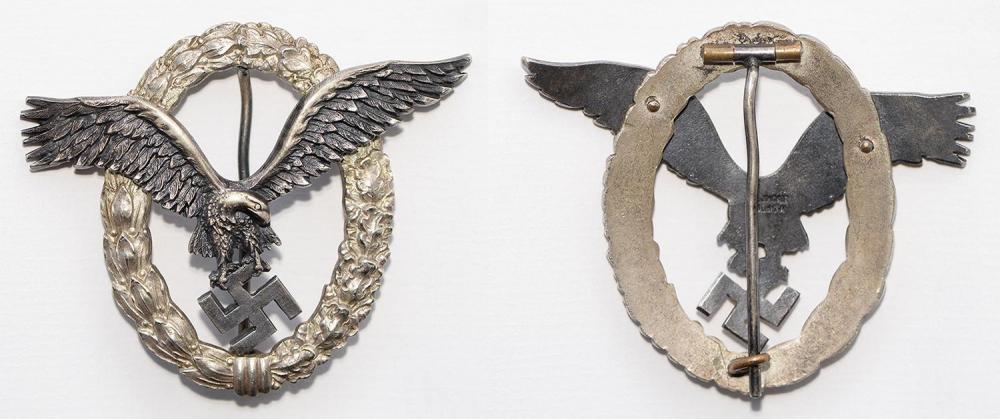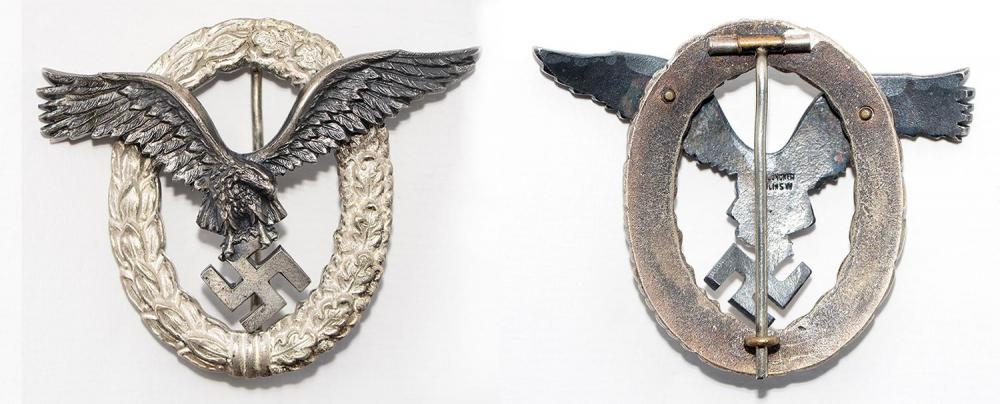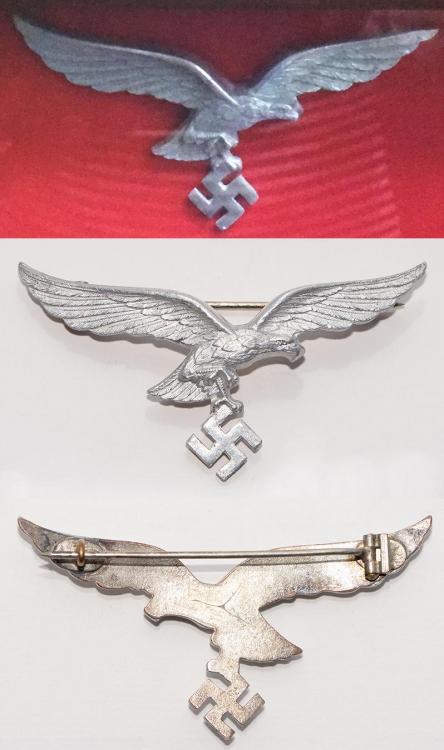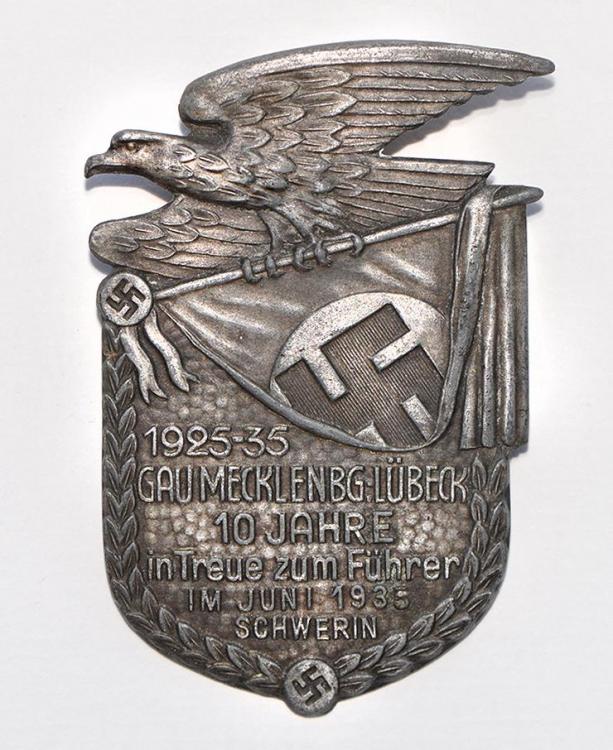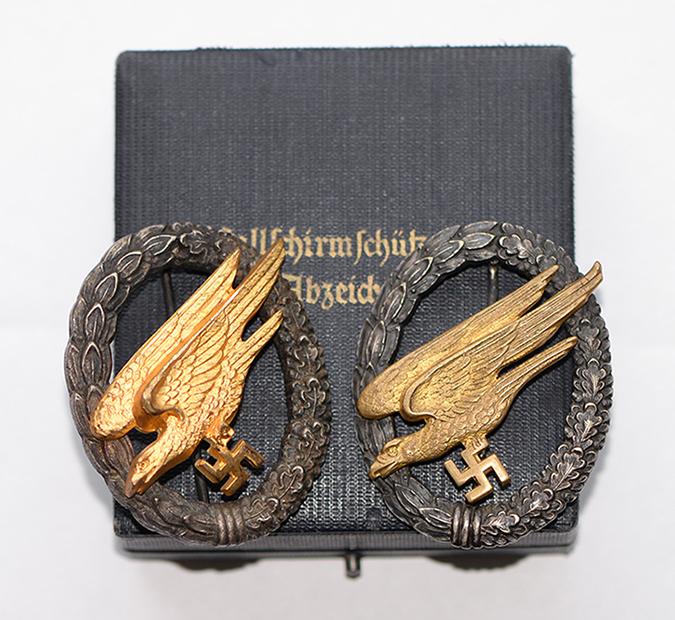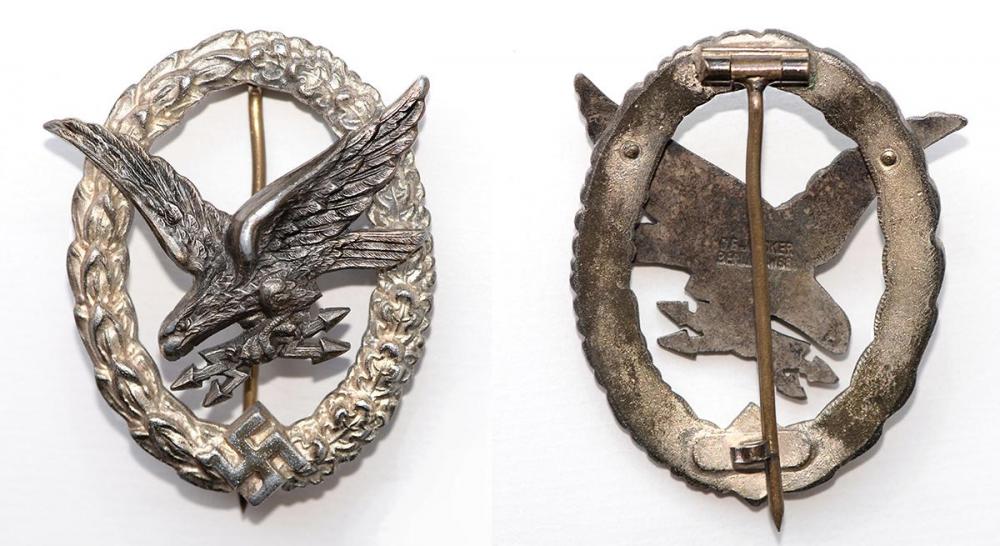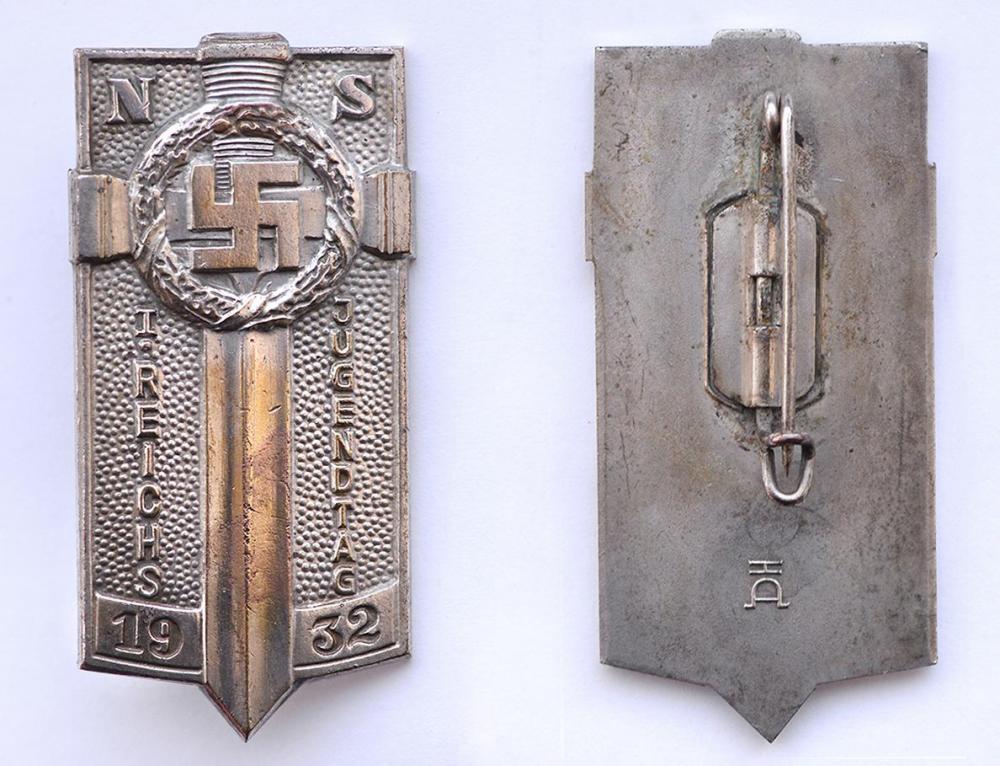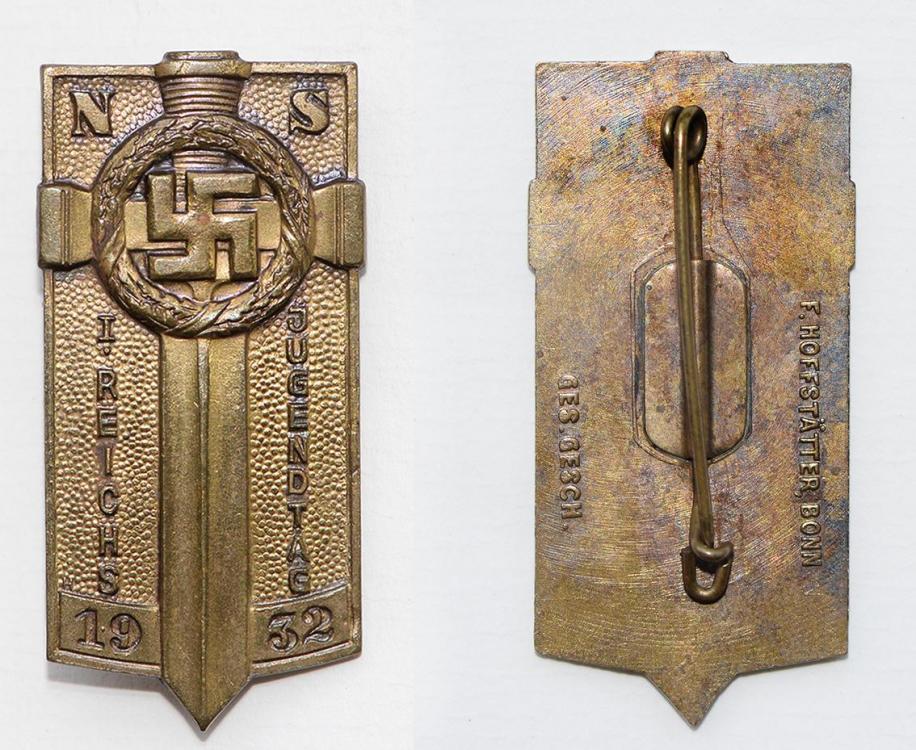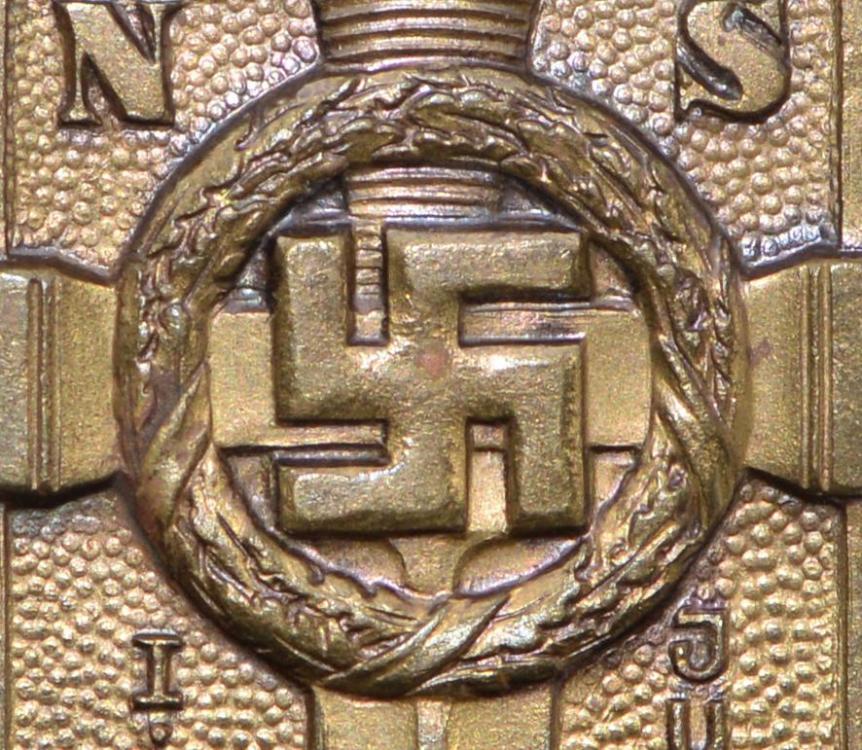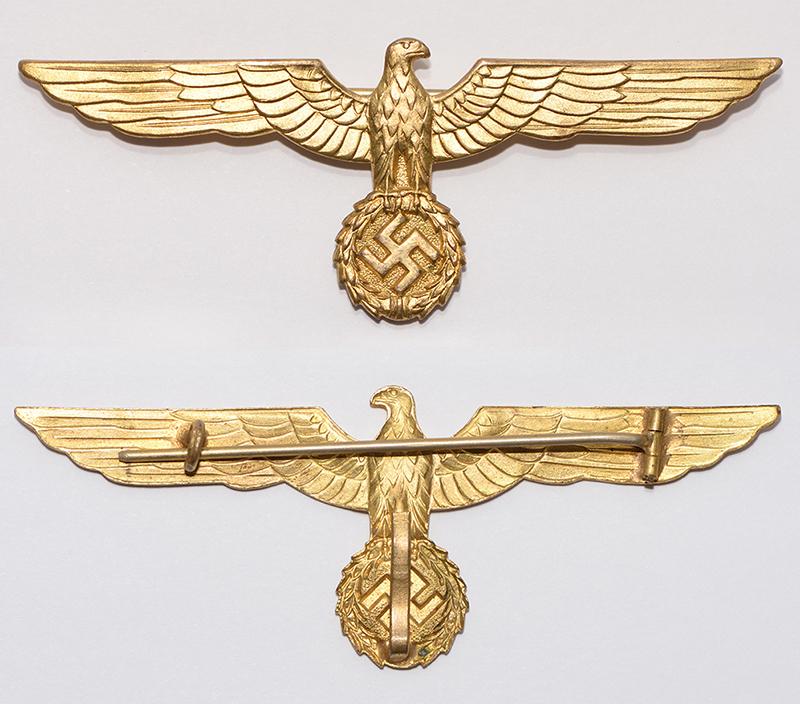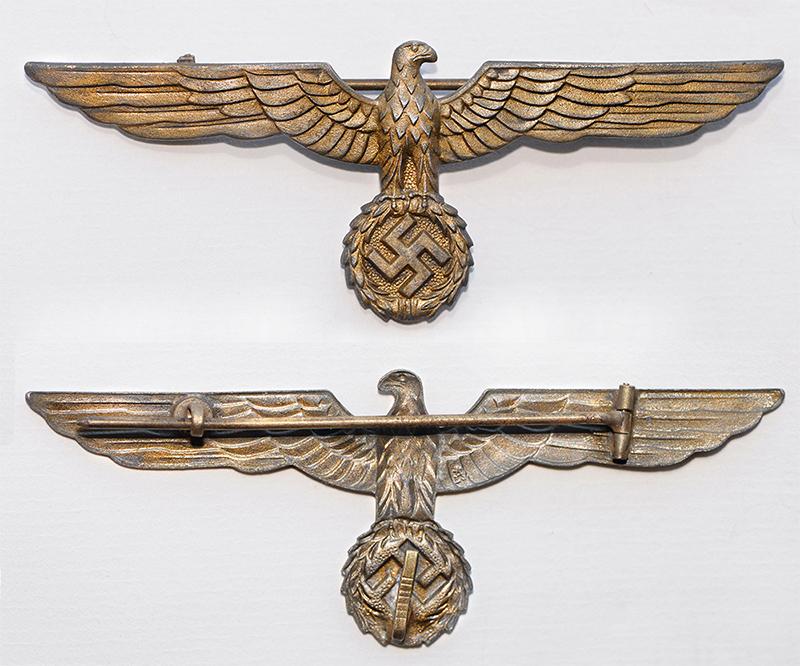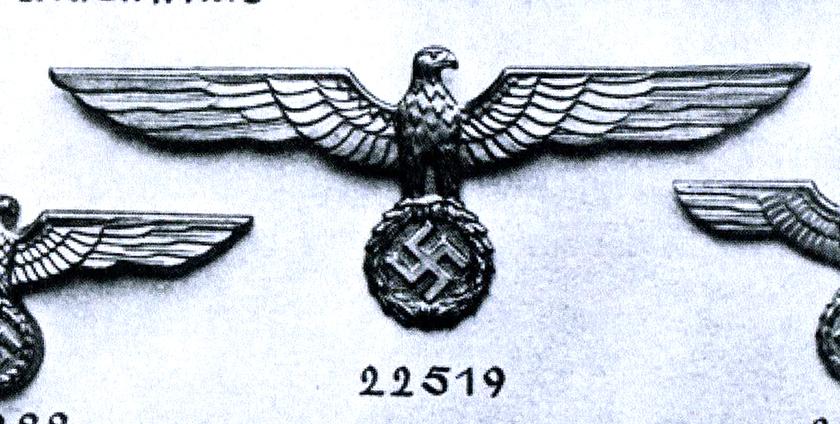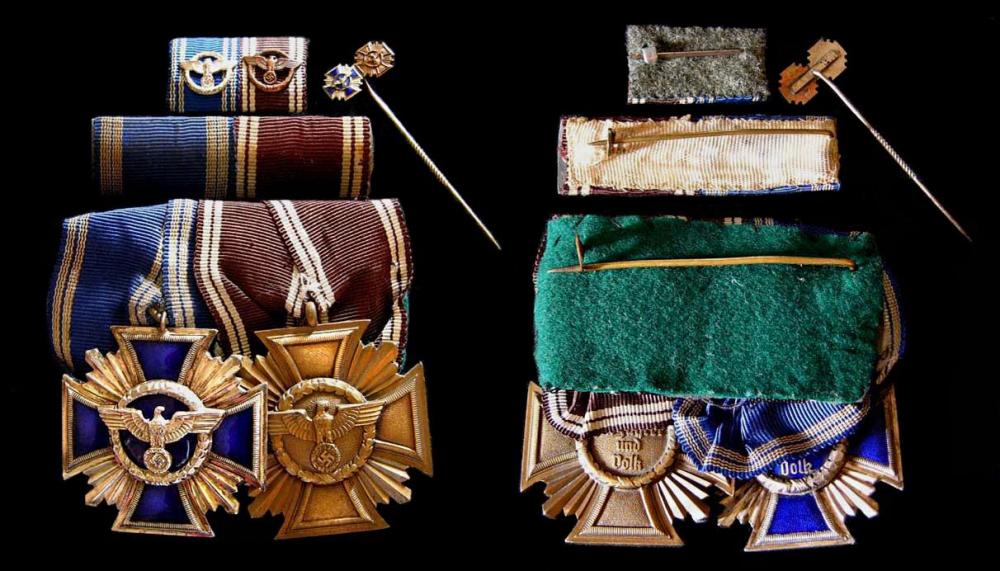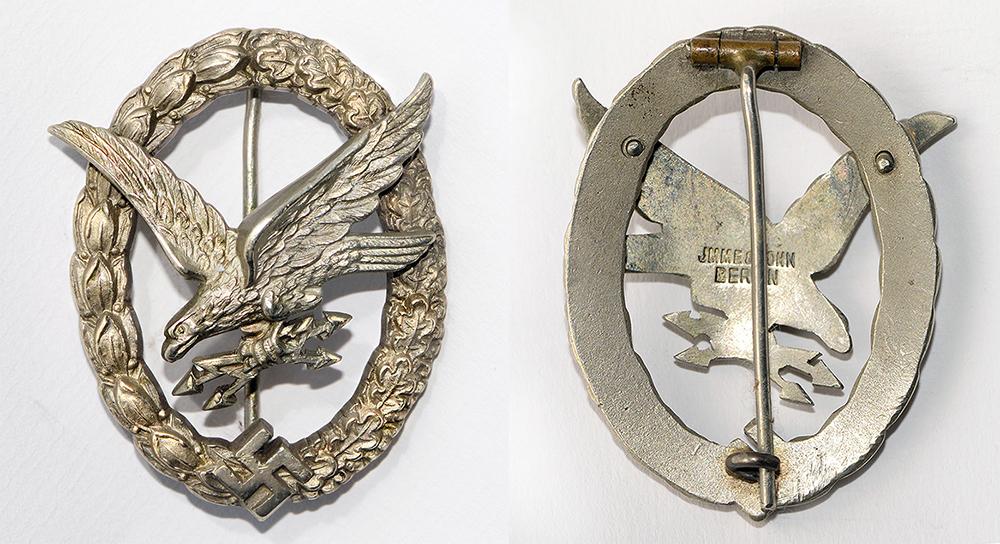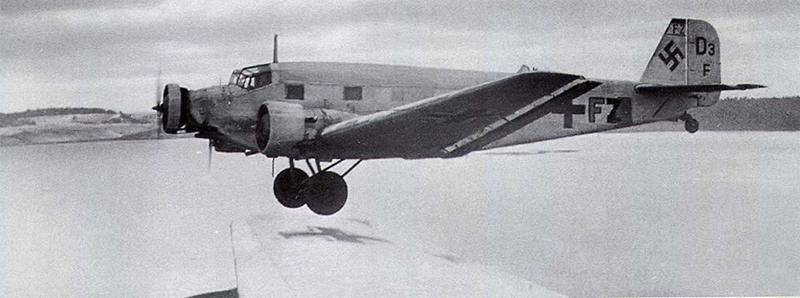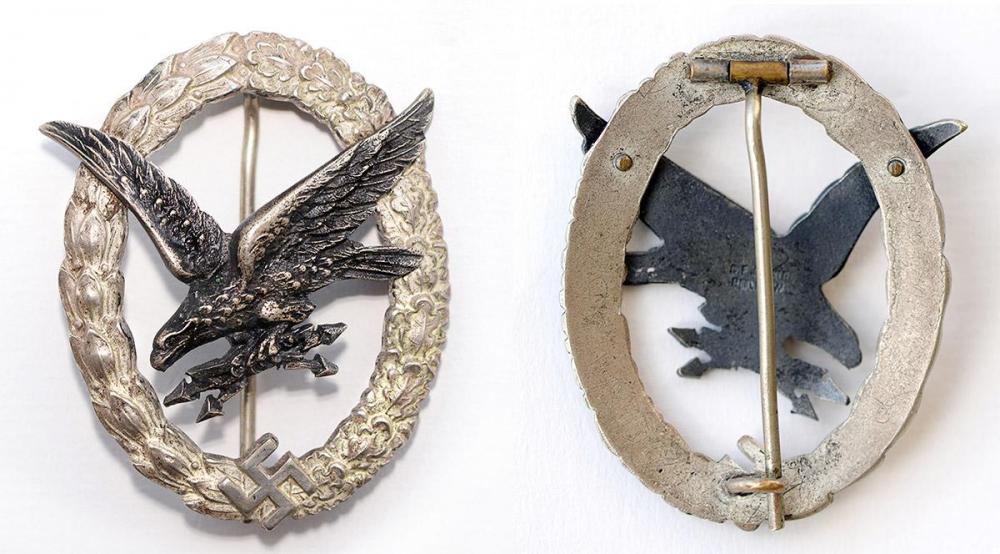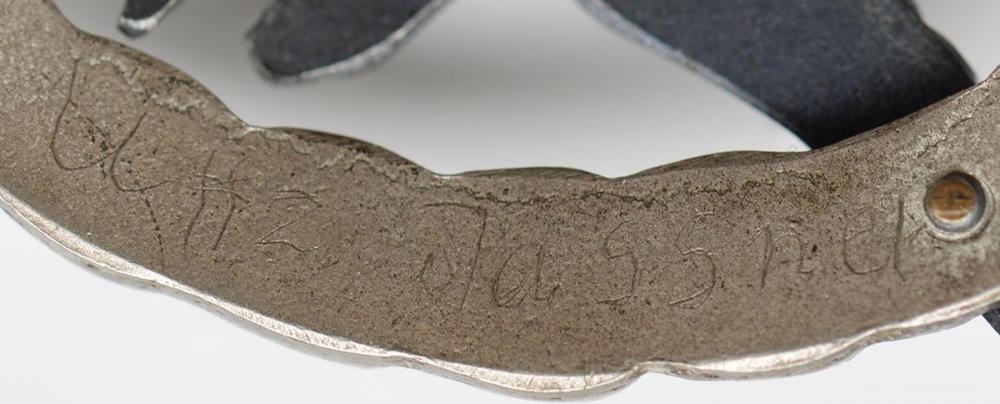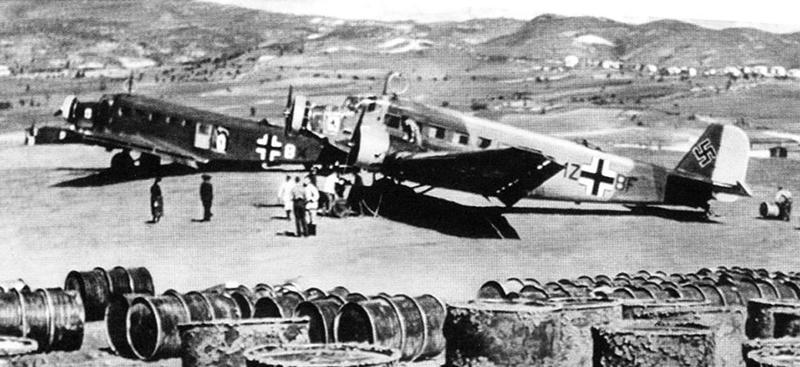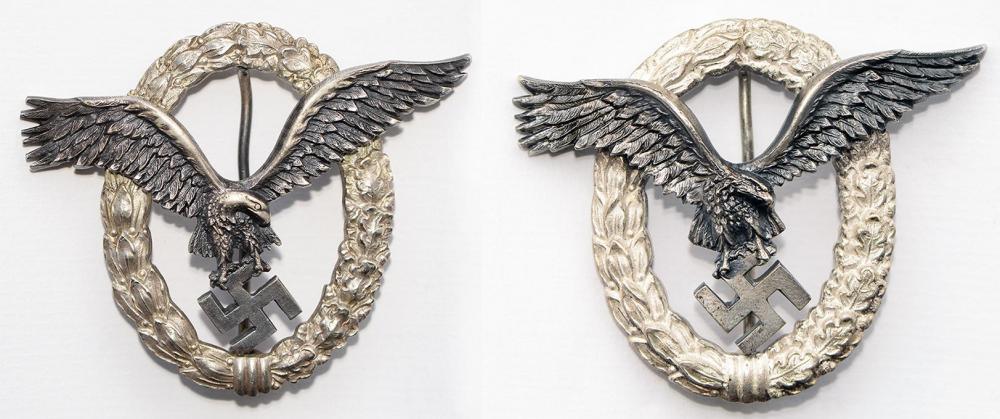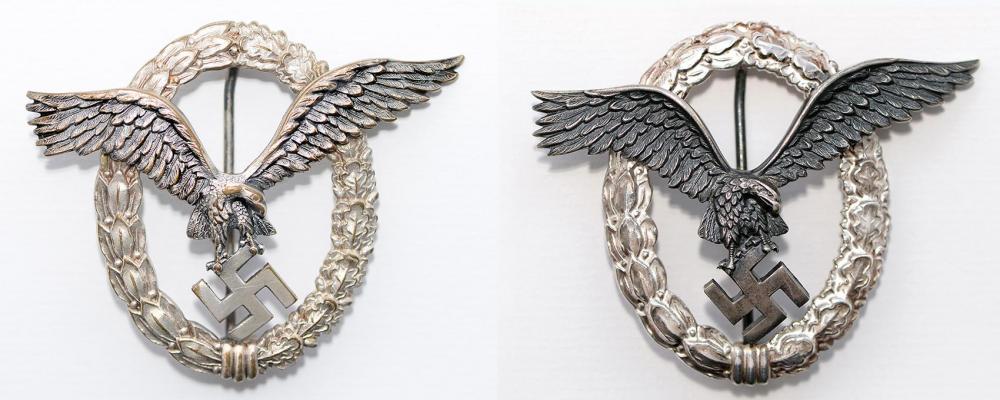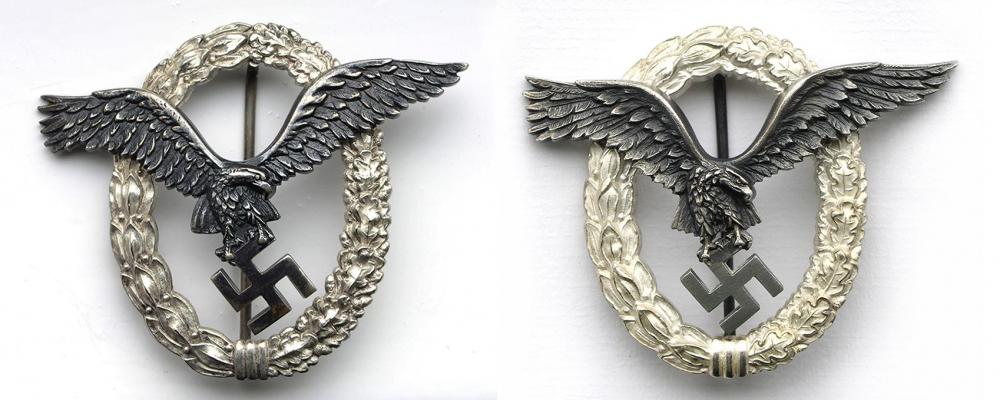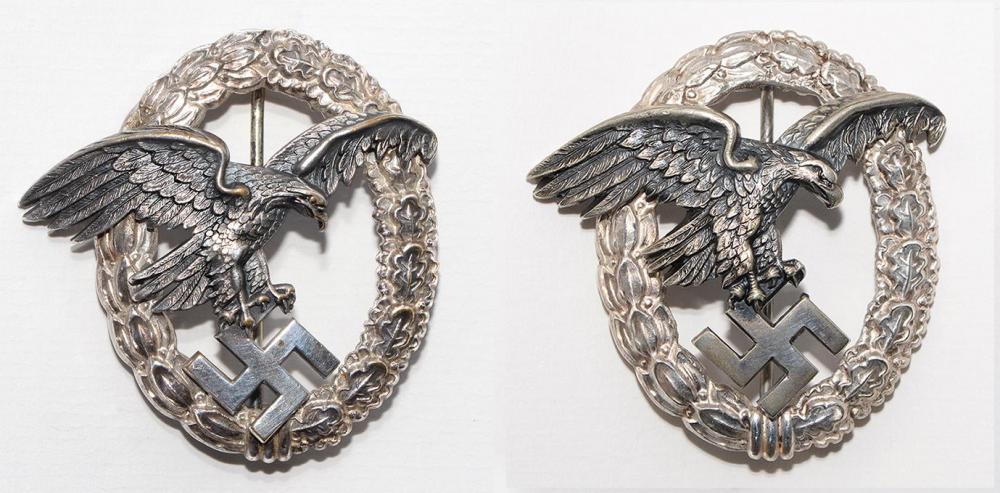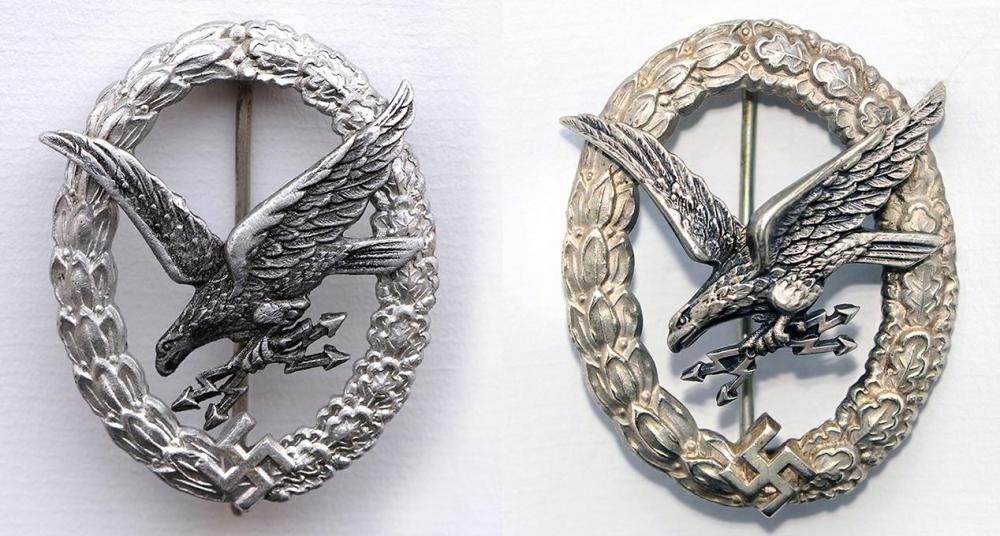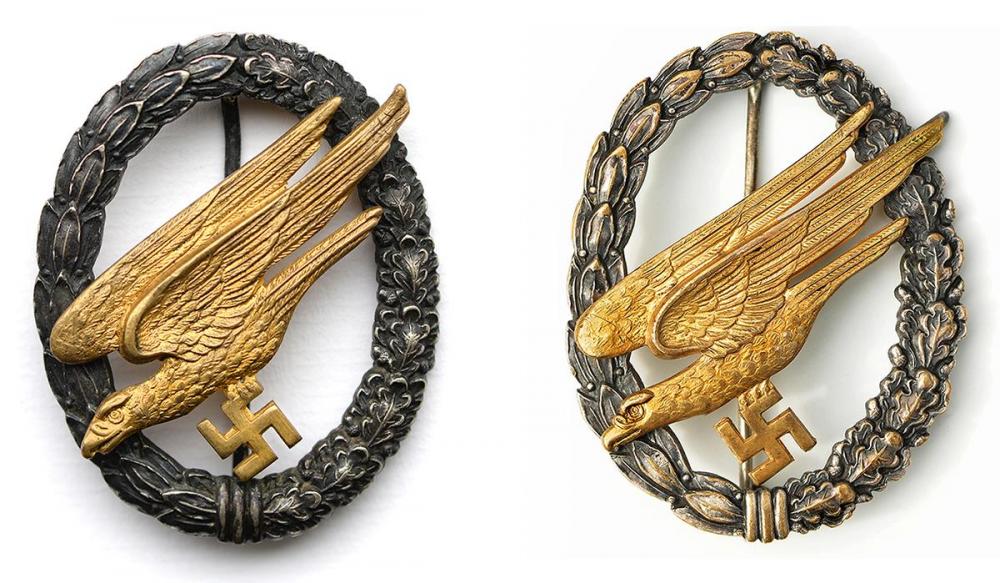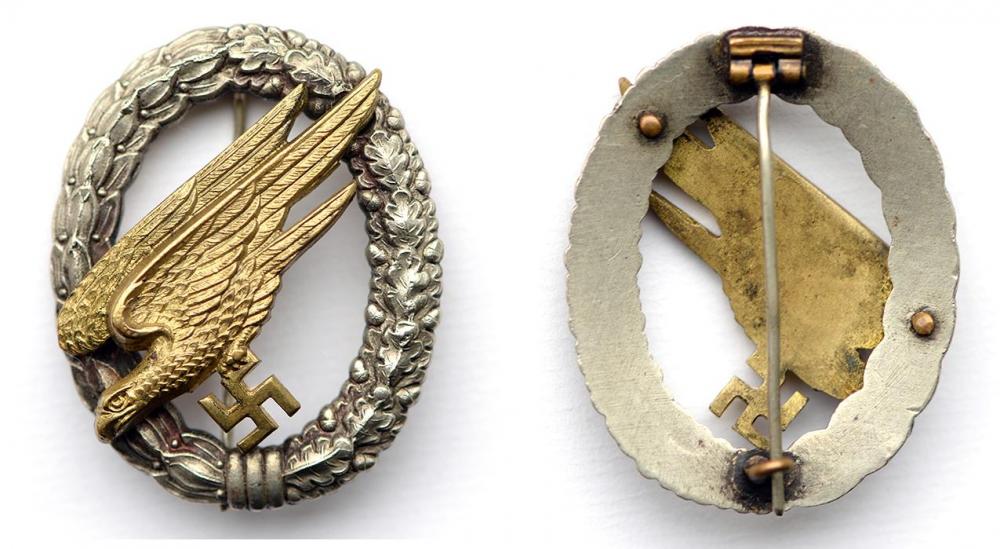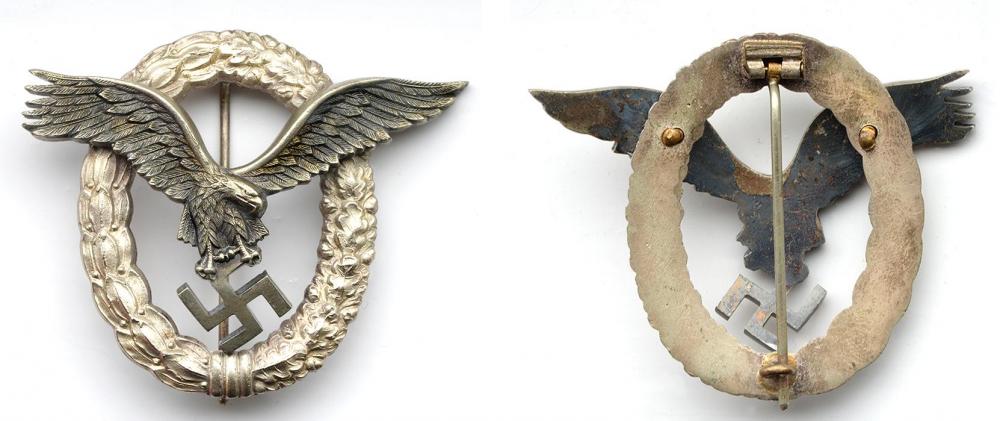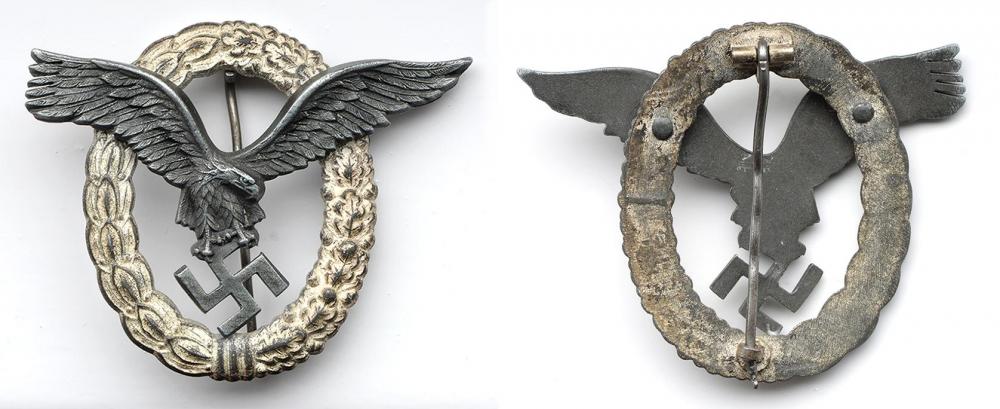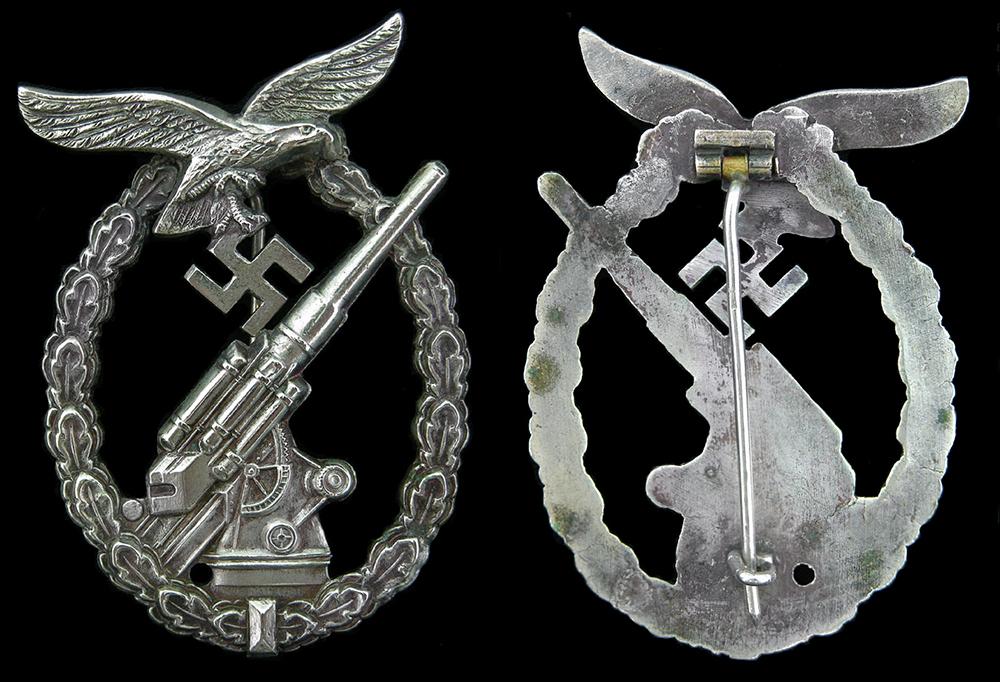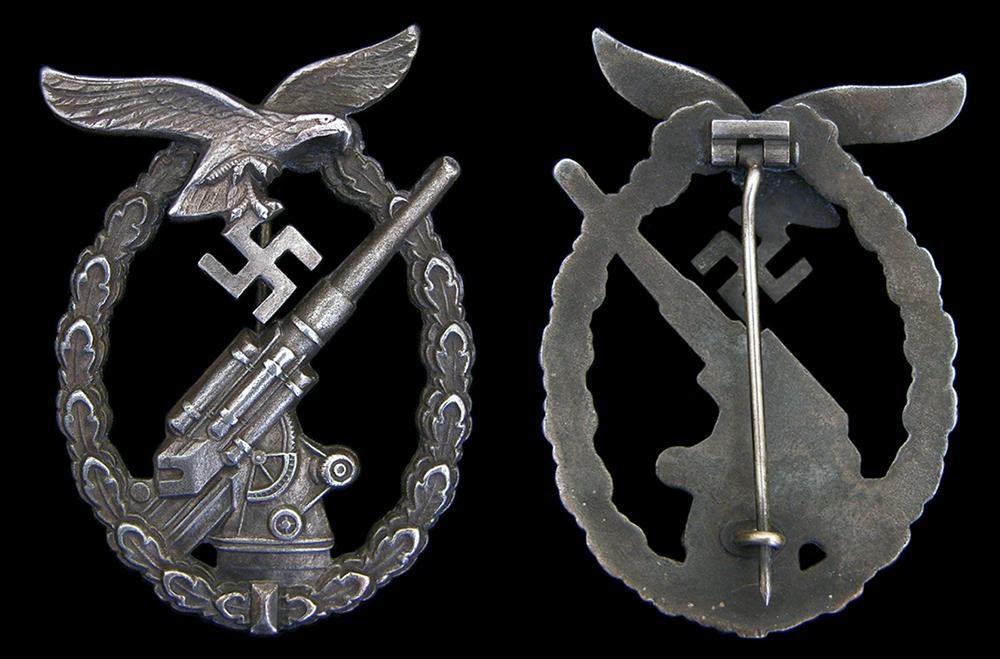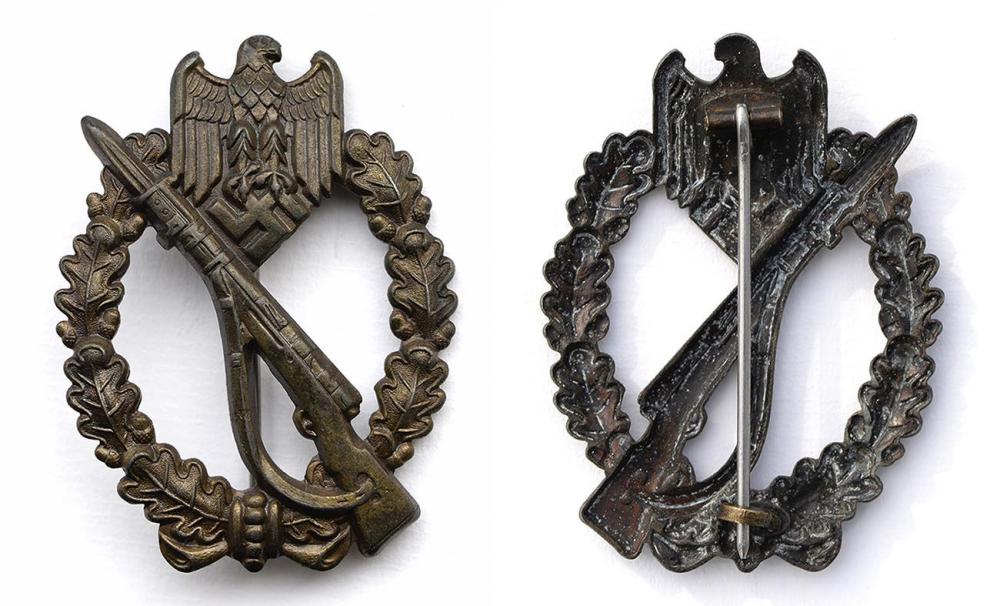-
Posts
3,397 -
Joined
-
Last visited
-
Days Won
3
Content Type
Profiles
Forums
Blogs
Gallery
Events
Store
Everything posted by J Temple-West
-
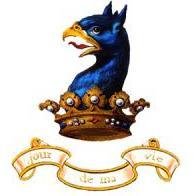
Help identifying an item please
J Temple-West replied to Christopher550's topic in Swords & Edged Weapons
Hi, Chris The hanger is certainly not standard issue...and I have to say that the only time that I've seen this type of design on the blade of a 1937 Luftwaffe dagger, it's been a reproduction. Hopefully the edged weapon collectors will be able to give you more info. -
So, let us say 1895... that would put him over the top for operational flying duties. I think you'll find that he was probably an instructor at one of the Luftwaffe flying schools, as so many WW1 flying veterans were. When the planning for the Stalingrad airlift was taking place (which turned out to be an absolute catastrophe, and in effect began the demise of the Luftwaffe and the end of Germany's war), it was estimated that to sustain a fighting force of 250,000 men would need air drops of between six hundred and 750 tons per day. The Sixth Army’s supply requirements were initially established at 750 tons per day, but later reduced to five hundred tons per day. The required aircraft and crews for the Stalingrad airlift assembled on short notice from the advanced flight training school. Sending many of the Luftwaffe’s most experienced instructor-pilots contributed to degradation in the quality of new pilots being trained. Every single available aircraft mobilized for the Stalingrad airlift. On 23 November 1942, Lieutenant General Hans-Georg von Seidel, the Quartermaster General of the Luftwaffe, ordered all Ju-52s (transport aircraft); Ju-86s (trainer; completely inappropriate as a transport); FW-200s and Ju-90s (long-range reconnaissance aircraft); He-111s (long-range bomber), from every unit, staff, ministry, and the Office of the Chief of Training. Six hundred aircraft along with some of the best flight instructors were stripped away from the training facilities. Specialized training schools were closed due to the ruthless efforts taken to ensure the success of the airlift. By early December Fourth Air Fleet had approximately five hundred aircraft at their disposal, with more becoming available as the operations progressed. Germany’s top military leaders were convinced that the number of aircraft now dedicated to the operations was sufficient to meet the logistical needs of the Sixth Army….how wrong they were. The airlift fleet was based at Tatsinskaya and I think you will find that this was where he will have been based until the end. As to the German archives…vast amounts of period records/documents were destroyed during, and after the war. If Major Heinrich Fritz Buschmann does not appear on the lists available to historians (such as the ones cited) then I think that they will have been lost….but let us keep our fingers crossed. Please let us know how you get on.
-
Exactly... as an aside, and regarding the insignia, it would seem that the tabs and boards were taken off this officer's white summer uniform as the metal eagle is present. not a great photo but looking at the summer uniform eagle I would say that it's an example by Friedrich Linden, Ludenscheid. would love to see clearer photo's of obverse and reverse to confirm.
-
Matt, I am in total agreement after doing further research over the past couple of days I have come to the conclusion that these badges, being so early, are most likely a composite of tombac with a very high percentage of copper, which would explain the colour, something I’ve not come across on later badges, showing through the wear on these particular badges. I don’t think weights on the badges would help us much as one is nickel plated, the other bronzed. This is why I appreciate the Internet, and the forum in particular , so much as we have people like you to bounce ideas off... Many thanks, Matt.
-
Just in are these 1932 1st Hitler youth rally Potsdam badges... I would have put them in the HJ 'tinnie' thread but after some research, I'm not sure that the silver badge belongs there...and I didn't want to split up the new acquisitions as the two badges show a little something of interest. There doesn't seem to be much information on these badges other than the fact that the bronze was sold, as per other 'tinnies', for a donation and the silver issued to participants of the rally.... I've often read that these badges were made of either aluminium, tombac or zinc, marker marked in this way, or that.. On receiving these two badges, they have turned out to be made of cupal...this being seen in close-up images where the copper is clearly visible on both. The silver badge for participants - maker: Hermann Aurich, Dresden The bronze badge -Maker: F. Hoffstätter, Bonn A close-up of the bronze badge shows the copper where the bronzing is worn...as with the wear on the silver badge.
-
That's the Aircrew badge (Fliegerschaftsabzeichen) introduced in 1933 by Göring for members of the clandestine Luftwaffe (Deutscher Luftsportverband or DLV e. V.). The Aircrew Badge became the official Pilot/Observer Badge for the Luftwaffe on 19 January 1935 but was retired and replaced by a newer Pilot/Observer badge instituted by Göring in 1936. Rare as hen's teeth.
-
Many thanks for taking the time to post these documents, Tomasz...It is much appreciated. You have made my day. Hopefully there is a Soldbuch for him out there as I would love to put a face to the group. So, as a small tribute to Jassner, at least we can reunite the badge with the Verleihungsurkunde. I hope you don't mind the use of your document. With Tomasz's help I have updated Jassner's unit history and awards. KGrzbV1 (1ZFZ) during supply-drop duties - Stalingrad
-
Oberfeldwebel Anton Jassner Aircrew JU52 I have been researching a member of the Luftwaffe’s transport squadron “Transportgeschwader1” (TG1) from a named Radio Operator/Air gunner Badge and have come up with the following information: But first, if anyone out there has any documents or information on this guy, please send me a PM. The badge and closeups of the details to the reverse of the badge which caught my interest... Juncker 2nd pattern Radio Operator/Air Gunner badge. Reverse of the badge with details: 2./KGzvB2 Briest unteroffizier Jassner So, my research turned up an award document for an Operational Flight Clasp for Transport and Glider Aircrew: in gold with hanger for “200” flights dated 1/12/1944 on a dealer site for Oberfeldwebel Anton Jassner in Transport Geschwader.1 which gave me the units where he started (on reverse of badge) in 1938, and the unit where he finished the war (award document)...and the hunt began. The following unit history all panned out for Jassner but it would seem, as so often happens, his medals, awards, documents etc, were sold off individually leaving me with an almost impossible task in finding and reuniting the group…they are out there, so thought it a good idea to post this piece of research in the hope that there are others who have all or part of Jassner’s group and are researching the same individual. His unit history: Jassner’s units marked with ** Kampfgruppe zurbesonderen Verwendung 2 (KGzbV2) Gruppenkommandeure: Obstlt von Lindenau, 8.38 - 8.39 Formed 1.8.38 in Brandenburg-Briest from half of KGrzbV1with: Stab/KGrzbV2 1./KGrzbV2 ** 2./KGrzbV2 3./KGrzbV2 4./KGrzbV2 In 8.39 used to form II. and III./KGzbV1. Bases: 1.8.38 - 5.39 Brandenburg-Briest Ju 52 5.39 - 8.39 Stendal Ju 52 Duties: Flights for fallschirmjägerschule Stendal. --------------------------------------------------------------------------------------------------- Kampfgruppe zurbesonderen Verwendung 10 (KGzbV10) Gruppenkommandeure: Maj Theodor Beckmann, 11.39 - 3.40 Formed 11.39 in Hagenow with: Stab/KGrzbV10 1./KGrzbV10 2./KGrzbV10 3./KGrzbV10 4./KGrzbV10 In 3.40 redesignated IV./KGzbV 1: Stab/KGrzbV10 became Stab IV./KGzbV1 **1./KGrzbV10 became 13./KGzbV1 2./KGrzbV10 became14./KGzbV1 3./KGrzbV10 became15./KGzbV1 4./KGrzbV10 became16./KGzbV1 Bases: 11.39 - 3.40 Hagenow Ju 52 --------------------------------------------------------------------------------------------------- Kampfgeschwaderzur besonderen Verwendung 1 (KGzbV1) Geschwaderkommodoren: Oberst Friedrich-Wilhelm Morzik, 26.8.39 - 1.8.41 Oberst Rudolf Trautvetter, 1.8.41 - 8.12.41 Oberst Otto-Lutz Förster, 12.41 - 23.3.43 Oberst Adolf Jäckel. 7.4.43 - 5.43 Oberst Karl Drewes (acting), 1.43 - 6.4.43 Stab: Formed 26.8.39 in Stendal. In 5.43 redesignated Stab/TG1. Bases: Stendal Ju52 I. Gruppe: Gruppenkommandeure: Maj Dr. Max Ziervogel, 26.8.39 - 22.11.39 Maj Karl Georg Witt, 22.11.39 - 31.8.40 Maj Adolf Jäckel, 31.8.40 - 7.5.41 Maj Otto Förster, 7.5.41 - 12.41 Maj Theodor Beckmann, 12.41 - 2.42 Maj Maess, 2.42 - 5.43 Formed 26.8.39 in Gardelegen from KGrzbV1 with: Stab I./KGzbV1 from Stab/KGrzbV1 1./KGzbV1 from1./KGrzbV1 2./KGzbV1 from2./KGrzbV1 3./KGzbV1 from3./KGrzbV1 4./KGzbV1 from4./KGrzbV1 In 5.43 redesignated I./TG1: Stab I./KGzbV1 became Stab I./TG1 1./KGzbV1 became1./TG1 2./KGzbV1 became2./TG1 3./KGzbV1 became3./TG1 4./KGzbV1 became4./TG1 II. Gruppe: Gruppenkommandeure: Hptm von Lindenau, 26.8.39 - 4.40 Maj Karl Drewes, 4.40 - 4.41 Hptm Willerding, 4.41 - 8.41 Hptm Guido Neundlinger, 8.41 - 5.43 Formed 26.8.39 in Stendal from parts of KGrzbV2 with: Stab II./KGzbV1 5./KGzbV1 6./KGzbV1 7./KGzbV1 8./KGzbV1 In 5.43 redesignated II./TG1: Stab II./KGzbV1 became Stab II./TG1 5./KGzbV1 became5./TG1 **6./KGzbV1 became6./TG1 7./KGzbV1 became7./TG1 8./KGzbV1 became8./TG1 III. Gruppe: Gruppenkommandeure: Hptm Markus Zeidler, 26.8.39 - 2.9.40 Maj Starke, 2.9.40 - ? Hptm Schröder, 1942 Hptm Siegfried Hagena, 15.10.42 - 5.43 Formed 26.8.39 in Stendal from parts of KGrzbV2 with: Stab III./KGzbV1 9./KGzbV1 10./KGzbV1 11./KGzbV1 12./KGzbV1 Disbanded 11.39. Reformed 3.40 from I./KGzbV 172 with: Stab III./KGzbV1 from I./KGzbV172 9./KGzbV1 from1./KGzbV172 10./KGzbV1 from2./KGzbV172 11./KGzbV1 from3./KGzbV172 12./KGzbV1 from4./KGzbV172 In 5.43 redesignated III./TG1: Stab III./KGzbV1 became Stab III./TG1 9./KGzbV1 became9./TG1 10./KGzbV1 became10./TG1 11./KGzbV1 became11./TG1 12./KGzbV1 became12./TG1 IV. Gruppe: Gruppenkommandeure: Maj Johann Janzen, 26.8.39 - 11.39 Hptm Theodor Beckmann, 3.40 - 1942 Hptm Fridolin Fath, 1942 Maj Scheuring, ? - 1.43 Hptm Kurt Schneidenberger, 16.1.43 - 5.43 Formed 26.8.39 in Liegnitz with: Stab IV./KGzbV1 13./KGzbV1 14./KGzbV1 15./KGzbV1 16./KGzbV1 Disbanded 11.39. Reformed 3.40 from KGrzbV 10 with: Stab IV./KGzbV1 from Stab/KGrzbV10 13./KGzbV1 from1./KGrzbV10 14./KGzbV1 from2./KGrzbV10 15./KGzbV1 from3./KGrzbV10 16./KGzbV1 from4./KGrzbV10 Known as KGrzbV Posen, 2.42 - 4.42. In 5.43 redesignated IV./TG1: Stab IV./KGzbV1 became Stab IV./TG1 **13./KGzbV1 became 13./TG1 **14./KGzbV1 became14./TG1 15./KGzbV1 became15./TG1 16./KGzbV1 became16./TG1 --------------------------------------------------------------------------------------------------- Transportgeschwader1 (TG1) Geschwaderkommodoren: Oberst Adolf Jäckel, 5.43 - 8.44 Oberst Josef Kögl, 8.44 - 30.9.44 Stab: Formed 5.43 from Stab/KGzbV1. Disbanded 30.9.44. I. Gruppe: Gruppenkommandeure: Maj Meass, 5.43 - 15.10.43 Maj Oskar Schmidt, 15.10.43 - 8.5.45 Formed 5.43 from I./KGzbV1 with: Stab I./TG1 from Stab I./KGzbV1 1./TG1 from1./KGzbV1 2./TG1 from2./KGzbV1 3./TG1 from3./KGzbV1 4./TG1 from4./KGzbV1 3. and 4./TG1 was disbanded 30.9.44. Airfields and Air Base Locations: May 1943 - Oct 1943 ? Ju 52 Oct 1943 - Jan 1944 Uman Ju 52 Jan 1944 - Mar 1944 Korsun Ju 52 Mar 1944 - Apr 1944 Reichshof Ju 52 Apr 1944 - ? Fokschany(?) Ju 52 ? - Feb 1945 Stolp-Reitz Ju 52 Feb 1945 - May 1945 Tutow Ju 52 II. Gruppe: Gruppenkommandeure: Hptm Gerhard Dudeck, 5.43 - 15.2.44 Maj Heinz Klamke, 15.2.44 - 4.9.44 Formed 5.43 from II./KGzbV1 with: Stab II./TG1 from Stab II./KGzbV1 5./TG1 from5./KGzbV1 6./TG1 from6./KGzbV1 7./TG1 from7./KGzbV1 8./TG1 from8./KGzbV1 Disbanded 4.9.44. Bases: 5.43 - 10.43 Jena-Röding Ju 52, SM.75, SM.81 10.43 - 3.44 Reinsehlen, Goslar Ju 52, SM.75, SM.81, SM.82 3.44 - 19.8.44 Gallarate SM.82, Ju 52 19.8.44 - 4.9.44 Ferschweiler SM.82 III. Gruppe: Gruppenkommandeure: Maj Walter Hornung, 5.43 - 6.43 Maj Siegfried Hagena, 6.43 - 6.7.43 Hptm Franz Stipschitsch, 8.43 - 12.43 Maj Fridolin Fath, 12.43 - 4.9.44 Formed 5.43 from III./KGzbV1 with: Stab III./TG1 from Stab III./KGzbV1 9./TG1 from9./KGzbV1 10./TG1 from10./KGzbV1 11./TG1 from11./KGzbV1 12./TG1 from12./KGzbV1 Disbanded 4.9.44. Bases: 5.43 - 10.43 Celle Ju 52, SM.82 10.43 - 2.44 Uman SM.82 2.44 - 4.44 Odessa I SM.82 4.44 - 9.44 Celle SM.82 IV. Gruppe: Gruppenkommandeure: Hptm Kurt Schneidenberger, 5.43 - ? Hptm Penkert, 3.44 - 4.44 Maj Karl-Heinz Schütte, 1.5.44 - 1.45 Formed 5.43 from IV./KGzbV1 with: Stab IV./TG1 from Stab IV./KGzbV1 **13./TG1 from 13./KGzbV1 14./TG1 from14./KGzbV1 15./TG1 from15./KGzbV1 16./TG1 from16./KGzbV1 Disbanded 30.1.45. Bases: 5.43 - 3.44 Würzburg Ju 52 3.44 - 4.44 Lemberg Ju 52 4.44 - 9.44 Agram Ju 52 9.44 - 1.45 ? Ju52 ---------------------------------------------------------------------------------------------------------------------------------- Theatre of Operations Poland Denmark Norway Western campaign - Opening phase of the airborne assault on the Hague... dropped 700 paratroops from I./Fj.Rgt. 2 at Ockenburg and Ypenburg Balkan Campaign Greece and Yugoslavia Operations in Russia Operations in the Mediterranean and North Africa. JU52's of KGrzbV1 in Greece ----------------------------------------------------------------------------------------------------- Known Ranks Unteroffizier Feldwebel – 1/8/1939 Oberfeldwebel – 1/7/1941 ………………………………………………………………………………………………………………………………. Awards, medals and qualification badges (known and those Oberfeldwebel Anton Jassner would have been entitled to) Known: Iron Cross 1st class – 21/5/1943 Iron Cross 2nd class – 12/5/1940 Radio Operator/Air gunner Badge – 4/9/1937 Long service medal for 4 years – 1/4/1937 Operational Flight Clasp for Transport and Glider Aircrew: in gold – 23/2/1943 Operational Flight Clasp for Transport and Glider Aircrew: in gold : with hanger for “200” flights 1/12/1944 Entitled to: Working back from the Operational Flight Clasp for Transport and Glider Aircrew: in gold with hanger for "200" flights: Operational Flight Clasp for Transport Air Crew -Bronze Operational Flight Clasp for Transport Air Crew-Silver Operational Flight Clasp for Transport Air Crew-Gold with star hanger Eastern Front medal ……………………………………………………………………………………………………………………………………….. Well, that is the research to date. I will add anything that comes up in the future.
-
Being a quiet weekend, I thought that I would put together a few comparisons of some Luftwaffe qualification badges from Germany’s pre-war era and its preparation for wartime production. All early badges were produced in comparatively low numbers for members of the clandestine Luftwaffe, meaning that lighter manufacturing methods (die, finishing and construction) were used to produce a much finer badge… one that, in a lot of cases, would eventually prove not to be robust enough to survive the use that they would undergo during the years to come. As Germany, in defiance of the Treaty of Versailles, started to build its military, so did the need for its manufacturing base to increase numbers produced, in all areas, and the producers of awards and badges, now aware of what was to come, went into mass production mode using methods that would last in the making the thousands of badges needed. New designs drawn up for a heavier and more durable version of badge, plans for a more robust hinge, pin and catch system and better construction methods implemented…production began. All pre-war (1936-1938) pieces are on the left, their war-time (1938-1945) counterparts are on the right. I should say that all the wartime examples shown are from the early part of Germany’s wartime production. As a personal preference, pre-war produced examples are my favourite, although I have always found it interesting how the design changed from a more stylized eagle to one that portrayed its “War Face”. C.E Juncker - fallschirmjäger abzeichen F.W Assmann - fallschirmjäger abzeichen C.E Juncker - flugzeugführerabzeichen F.W Assmann - flugzeugführerabzeichen W. Deumer - flugzeugführerabzeichen F.W Assmann - beobachterabzeichen (1st pattern eagle, 3rd pattern wreath) F.W Assmann - Fliegerschützenazeichen für Bordfunker -------------------------------------------------------------------------------------------------------------------------------------------------------------------------------------------------------------------------------------------------------- Interesting to note how close the different die makers were when producing an eagle from the official design. A side by side comparison of the eagle produced by C.E Juncker (left) and F.W Assmann (right).
-
Finding a private collector who will buy the entire collection is going to be problematic as such a collector is already going to have certain examples of the DKiG, that you are trying to sell, and will most likely want to 'cherry pick' the one's that he doesn't. I think your options are: Find a reputable dealer that will pay a fair price for the entire collection.... no mean feat. Sell the collection individually... in this way, you can control each sale by means of negotiation which will hopefully get you closer to a price you are looking for. To test the water....try placing the collection, or a few examples, in the forum for sale section. The word soon gets around that a collection is available.



